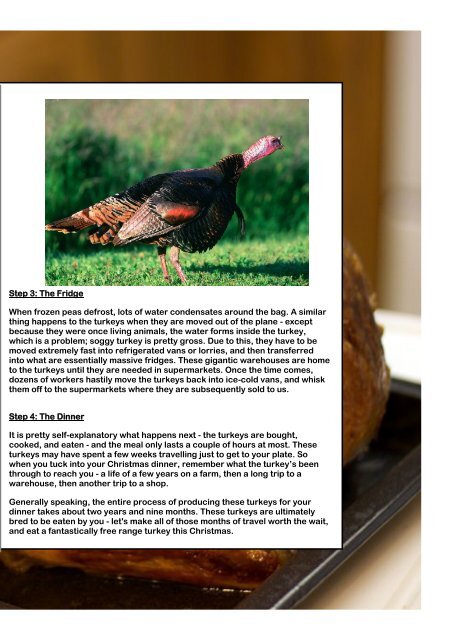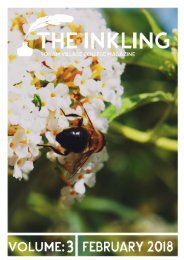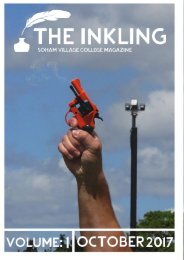The Inkling Volume 2
Create successful ePaper yourself
Turn your PDF publications into a flip-book with our unique Google optimized e-Paper software.
Step 3: <strong>The</strong> Fridge<br />
When frozen peas defrost, lots of water condensates around the bag. A similar<br />
thing happens to the turkeys when they are moved out of the plane - except<br />
because they were once living animals, the water forms inside the turkey,<br />
which is a problem; soggy turkey is pretty gross. Due to this, they have to be<br />
moved extremely fast into refrigerated vans or lorries, and then transferred<br />
into what are essentially massive fridges. <strong>The</strong>se gigantic warehouses are home<br />
to the turkeys until they are needed in supermarkets. Once the time comes,<br />
dozens of workers hastily move the turkeys back into ice-cold vans, and whisk<br />
them off to the supermarkets where they are subsequently sold to us.<br />
Step 4: <strong>The</strong> Dinner<br />
It is pretty self-explanatory what happens next - the turkeys are bought,<br />
cooked, and eaten - and the meal only lasts a couple of hours at most. <strong>The</strong>se<br />
turkeys may have spent a few weeks travelling just to get to your plate. So<br />
when you tuck into your Christmas dinner, remember what the turkey’s been<br />
through to reach you - a life of a few years on a farm, then a long trip to a<br />
warehouse, then another trip to a shop.<br />
Generally speaking, the entire process of producing these turkeys for your<br />
dinner takes about two years and nine months. <strong>The</strong>se turkeys are ultimately<br />
bred to be eaten by you - let's make all of those months of travel worth the wait,<br />
and eat a fantastically free range turkey this Christmas.




